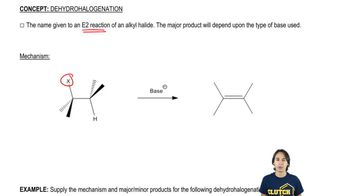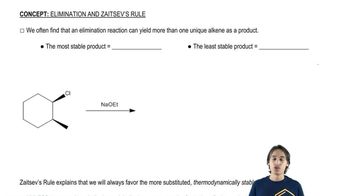What halides would undergo E2 dehydrohalogenation to give the following pure alkenes?
e. 4-methylcyclohexene



 Verified step by step guidance
Verified step by step guidance Verified video answer for a similar problem:
Verified video answer for a similar problem:



 3:02m
3:02mMaster The dehydrohalogenation mechanism. with a bite sized video explanation from Johnny
Start learning